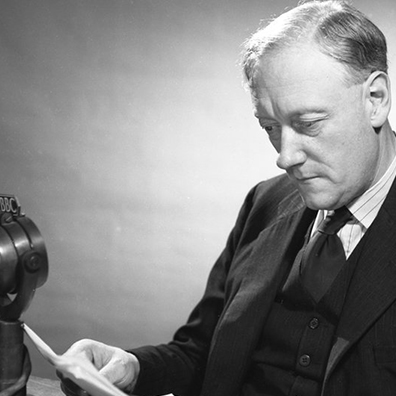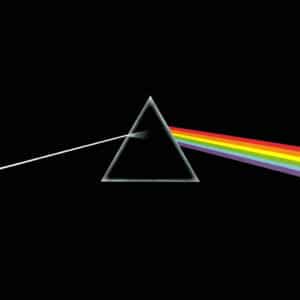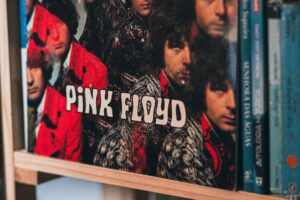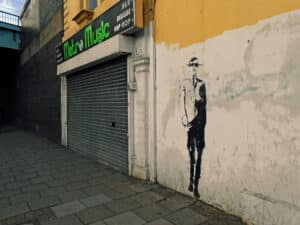
The Beach Boys and Brian Wilson– Interrupted Brilliance?
2980 words • 12 minutes

After my recent article about the Beatles I was pleased to have received thousands and thousands of comments and emails asking about what other musical groups might have found a bit of inspiration from drugs. Thousands and thousands of comments? Well…ok…would you believe hundreds and hundreds?
Not buying that either? Well, the truth is that just a single person asked if I had read about any other musicians in the 1960’s who had reached new levels of musical success after having had an “experience” with conscious altering substances. This person was joking of course, for in the 1960’s the list of artists who were not experimenting with various chemicals was a lot shorter than those who actually were.
Unfortunately, many a talented and promising player of the Pipes of Pan has come to grief from too much substance abuse. Perhaps the most striking of these was Syd Barrett of the group Pink Floyd. Viewing the tragic results of what Syd did to himself in frying his mind gives pause to anyone who is tempted to poke fun at the casualties of the rock and roll lifestyle. These were real people who, whether “acid casualties” or not, were seeking to be even more creative, but sadly ended up losing the spark that had been driving them forward.
Two pillars of American “soft power” (that is to say non-military power) from the end of WW2 to around the year 2000 were Hollywood movies and American music—with music being, arguably, the most dominant of them all. Millions of teenagers around the world honed their English skills, slang, and styles by listening to singers and bands from the United States. These days we might laugh at the innocence of it all, but back then it was the best way for kids all over the world to connect and share something fresh and cool.
Just a couple of years before the Beatles led the British Invasion it was the Beach Boys who were the ones taking the world by storm and reaching the world’s teenagers. Their songs revolved around three things: girls, cars, and the love of surfing/ocean life and these topics mixed perfectly with the direction of pop music at the time. Sure, Elvis had already shifted the musical tectonic plates away from the old days, but it was the Beach Boys who exploded with a row of hits that were just plain fun.

Southern California
sparked the surf music scene in the late 1950s
Surprisingly to many outside the United States, surf music wasn’t invented by the Beach Boys. It could be heard in the Southern California music scene as early as the late 1950’s. Then, in the early 1960’s it diverged into two different branches—with what was called instrumental surf on one side and vocal surf on the other.
You will undoubtedly recognize the catchy hooks and beats of the instrumental surf in such songs as the breathtaking Misirlou by Dick Dale, Wipeout by the Ventures or, one of my favorites from younger days, Pipeline by the Chantays. These tunes are as enjoyable as they were 60 years ago—perhaps in some ways even more so because the guitar sounds are so “clean” and the percussion is so understated.
Groups like the Beach Boys and Jan and Dean (Dead Man’s Curve) developed the vocal surf sound by grafting their vocal harmonics about girls, cars, and big waves, onto the underlying surf-sound instrumentation. Serious music? Perhaps not, but who cares? None of them were pretending to be high-brow as if they were rewriting Richard Strauss’ tone poem from Nietzsche Also Sprach Zarathustra. Now I understand that some people might wish to listen to Wagner’s complete Ring series on the way to work, but most of us just want to something fun to mindlessly groove to.
Yet the spark behind the Beach Boys was anything but mindless. Brian Wilson was as, leader of the band, a musical visionary who as a teen formed the group with his two brothers Carl and Dennis, friend Al Jardine, and cousin Mike Love. Even at such a tender age Wilson was looking into the future and was thinking about sonic soundscapes that few others could imagine. It was his songwriting ability and a rare intuition for harmony that allowed him to pen and musically interpret hit after hit in the early 1960’s—from Surfin, Surfin Safari, Surfin USA, Little Deuce Coupe, to Help Me Rhonda, and many others.
You can probably figure out that this would get old after a while and Wilson did indeed tire of these themes—he wrote his last surf song in the spring of 1964. He tried something a little different that year with I Get Around (the B side was incredibly, in my opinion, the even better Don’t Worry Baby). I Get Around was the Beach Boys’ first to reach #1 and hinted at the sophistication of studio techniques that soon became Wilson’s trademark.
The album All Summer Long came out in July and showed that Wilson had been knocked off his feet by the British Invasion. He realized that he needed to “up his game” and dig deeper into the sonic landscape if he were to remain fresh, innovative, and relevant.
And dig deeper is exactly what Brian Wilson did—not only into how he felt music should sound, but what it should feel like and how it should be expressed. Even from his earliest teenage years, when he taught his family how to harmonize, he had an incredible sensitivity as to how melodies and harmonies were rooted in his emotions and how they should somehow be layered into a song to give it richness and texture.
This sounds like pretty serious stuff, but Wilson had an itch to peer over the musical horizon—an itch that we recognize in the biographies of most successful artists. His hunches and feelings proved to be accurate and they led him to take the Beach Boys in a new direction and leave the cars and surf behind.
This sounds pretty old hat in 2020, but back in the early to mid-1960’s pop groups were expected to do nothing more than go into the studio, meet the professional musicians who would do the backing instrumentation, and then stand in front of the microphones and fill the tape with music. A dozen tracks were needed if the record were to be an LP or just two songs for an A and a B side if the release were to be only a single 45. It was a simple formula, rather pathetic actually, but everyone from the musicians to the executives of the record companies only expected 2 ½ to 3 minutes of music that people could dance to. The joke was that if an artist wanted to make a statement then he should take out an advertisement in the newspaper…

Brian Wilson
Circa 1983
Wilson, however, was in no way just your typical pop musician. In addition to his musical chops on the piano, guitar, and with his voice, he also wrote the songs (or at least the music if his collaborators had the words) and produced them. Here he was, a mere lad, giving directions to the professional studio musicians and personnel he gathered for his musical quest. In fact, he was so at home in the studio that he wished nothing more than to send the other Beach Boys to do the live shows while he stayed back to write and create.
All this expertise didn’t just bubble up in his mind however. He was open to new influences and was a keen fan of what the producer Phil Spector was doing with his Wall of Sound techniques. He watched how Spector matched instrumentation with rich vocal harmonies. Few artists of the mid 1960’s, perhaps other than the Beatles, were exploring these deep layering concepts and orchestration in pop music—it was all rather new and unproven.
Ah, but such was the brilliance of Brian Wilson that he not only made it work, but he made it work very well. In early 1965 he conceived, around the time of his first experiments with LSD, one of the most memorable songs of the 1960s: California Girls. It might have required 44 takes to get it in the can, but the results speak for themselves.
With this success under his belt, he set his sights on an album that he wanted to be a cohesive entity—a continuum of music in a world of LPs that were still, for the most part, just an assembly of 10 or 12 songs thrown together without any relation to one another. The Beatles explored this concept with their Rubber Soul album and Brian wanted to do the same—in his own way of course.
The album that sprung from this 1966 effort was of course the famous Pet Sounds. Although initially a bit bewildering to the public and reaching only the #10 position in the United States (#2 however, in the United Kingdom where it was an immediate hit), with time it has been recognized for being the innovative musical compilation and orchestral work that Wilson was striving for. The detailed instrumentation that Wilson packed into these songs is even today amazing. In just two of the numbers, God Only Knows and Wouldn’t It Be Nice, the listener can hear nearly 30 different instruments being employed.
Game changer? Indeed! As I mentioned earlier, Wilson was putting his studio gifts of sound layering into practice when the record executives could see no further than the 3-minute song that teenagers could dance to…
Wilson followed this album with the incredibly inventive and catchy Good Vibrations which the Beach Boys released as a single in the autumn of 1966. This song, with good right, is considered by many music historians to be the high-water mark of both Wilson’s and the Beach Boys’ artistry. It was the most expensive single ever made to that point with over 90 hours of studio tape being recorded and it stretched singers and instrumentalists to do things musically they never had before.
I realize that one has to be careful with the word masterpiece, but it is hard not to consider this Wilson’s finest hour and yet he was, while standing on the peak of this accomplishment, a mere 24 years old…
Yet what happened to interrupt this blistering path of success? Wilson was on a roll and the future seemed to be wide open for him to continue to innovate and be a major influence in pop and beyond.
The answer to the question is that in the following years Brian unfortunately suffered bouts of serious mental instability. His father had been nothing short of a jerk and there is some debate as to whether his emotional intimidation extended to physical abuse as well—such as rendering Brian nearly deaf in one ear after hitting him so hard. The young Wilson met sudden and astounding fame with the Beach Boys, but still was quite insecure—as hard as it is to imagine that he, who had been the high school football quarterback and had such obvious musical gifts, could possibly be insecure.
He certainly did not enjoy the pressure of being labelled as a “genius” and sought instead to just be respected for his musical skills, his songwriting ability, and his contribution to his craft. He didn’t seek to be put up on a pedestal for all to see and when he was, he certainly did not enjoy it.
Sadly, as 1967 unfolded, Brian’s mental issues worsened. He cancelled what was supposed to be the Smile LP and instead cobbled together what he called the Smiley Smile album instead. While modern musical experts might find great worth in this effort, the public neither liked the name nor the music and it became the first in a string of what many critics did not hesitate to call failures—or at least “not up to the usual standards.”

Surf City,
here we come!
Unfortunately, Brian linked his descent into mental struggles with a serious drug habit—from cocaine to LSD—all washed down with copious amounts of alcohol. Again, I do not judge him for this. He was fighting mental demons that the medical professionals of the day simply could not successfully treat. Worse, one of his medical team, the infamous Dr. Landy, is considered to have been defrauding Brian of lots of money while at the same time subjecting him to highly questionable recovery programs.
Wilson became a recluse, ate so poorly so that his weight ballooned to over 300 pounds, and he destroyed relationships with his brothers and bandmates, wife, and many others in his circle of friends and acquaintances.
He did, however, somehow hang on. He recuperated well enough to bring out some work in the early 1970s while the other Beach Boys toured. His brother Dennis drowned in 1983 and the third brother, Carl, died of cancer in 1998 at the age of just 51.
As if by a miracle however, the same Dr. Landy that was apparently charging Brian $20,000 a month for his counseling services and later lost his license to practice psychiatry, did get Brian back on his feet long enough so that he could rejoin the Beach Boys for the 1985 Live Aid concert and to work on the album The Beach Boys. Sadly, these efforts were followed by another plunge into the depths of more mental struggles and more lost years.
Yet Brian kept muddling through and against the odds once again started to do really good work. After the mid 1980’s he released a few solo albums and a ghost-written autobiography, but in the mid 1990’s to early 2000’s he truly found his stride. He revisited the Smile archives that he had abandoned in 1967 and presented these songs at a concert he held in London in 2004. He won a Grammy in 2005 for the best rock instrumental, went on a concert tour, and won acclaim at the famous Glastonbury music festival in England. He reached the #1 spot on the Jazz chart for his interpretations of George Gershwin, was signed by Disney to do a collection of film songs, and contributed to the homage album to Buddy Holly.
A number of experts have been so impressed with Wilson’s post 2000 efforts that they grow impatient with those listeners who focus solely on his early Beach Boy years and the Pet Sounds album. There is merit to this argument for as you listen to his Gershwin interpretations you can immediately realize that he still had serious chops as an arranger. While I admit that I do not enjoy his voice on these tracks (I find it cloying and almost annoying), the instrumentation, arrangement, and productions are stunningly superb.
Equally enjoyable in listening to these tracks is knowing that he, who was so mentally troubled and suffered so many “lost” years, came back against the odds to contribute, in his unique way, to the greater musical oeuvre. There is no doubt that the world of pop and pop-orchestra has been significantly shaped by Brian Wilson and that we have been the recipients of his brilliance—even with its interruptions.
Yet when I think of Brian Wilson’s path through life, I cannot help but wonder what might have been. Was he one of those acid casualties I talked about earlier? I leave that for him to answer here Wilson comments on drugs. Again, I do not judge, but only wonder what a healthy Brian Wilson would have had in store if he had not, at the ripe old age of 24, started to drift.
What I most wonder about Brian Wilson however, is not the details of his personal drug habits, but rather what could have been if he had had a partner next to him in the studio who was equally as gifted as he was—someone who could have envisioned what Brian was seeing and helped him work it all out. Many ultra-talented artists seem to have a near religious ability to peer into the heavens and see things that mere mortals cannot. It is a shame they are often alone in trying to explain it to the rest of us.
Think of the great popular musical teams of history: Gilbert and Sullivan, Rodgers and Hammerstein, and McCartney and Lennon. Each of these teams pushed each other by constantly working with new ideas.
Yet Brian Wilson was so young, was saddled with an incredibly counterproductive father, and was joined with bandmates who still wanted to sing about fast cars and surfing and girls. Who was there to help him interpret what he felt and saw and imagined? Who was there to try to funnel his talents and visions into something productive?
Wilson and the Beach Boys have sold over 100 million records so that is hardly a failure. Sadly though, we will never know if Brian’s creative powers had more room to run or if the engine had already burned all its fuel.
On a happier note, we have to hand it to Southern California for being an incubator for great musical groups. As I was researching this article, I was reminded that Brian Wilson grew up in Hawthorne, just a couple of miles from Los Angeles International Airport. With the Beach Boys he performed a song (As did Jan and Dean) called The Little Old Lady From Pasadena about an old lady who drives a fast and powerful car.
Pasadena, in turn, has also made a major contribution to musical history. Lying just north of downtown Los Angeles, it was the home to another set of brothers who took the rock music world by storm. Those brothers were, of course, Eddie and Alex Van Halen…but I will save their story for an upcoming post.
In the meantime, the surf is up so grab your surfboard, head for the California beach, and try to impress the girls!
![]()







Neal,
When John Lennon heard “Pet Sounds” he was floored, and began work on what became the “Sgt Peppers” album, which many critics call the greatest album of all time. Also Paul McCartney has said that “God only Knows” is the most beautiful song ever written. By the way, great plug for my favorite band, Van Halen!
Cool info Ciro–thanks. Van Halen is definitely on the to-do list!
Heroes and Villains is an incredibly intricate song that is wonderful to listen to multiple times in a row. Also, when visiting So Cal on a business trip, I had to drive up and down Colorado Blvd, just as the little ol lady did.
I have to admit that I overlooked Heroes and Villains when researching this. Thanks for mentioning it.
I wonder if you can rent a “Super Stock Dodge” to do that driving around in? I think it was in Little Deuce Coupe that they mentioned things like “four on the floor” and slip clutches and the like. Now the electronics do all that–who would have imagined?
I’d love to read more articles in this series!
Thanks Eric. I will try to get a few more out there!
It’s hard to think about endless summer, and catching a wave, or surfer girls as I sit in Denver with the first snow of the year…8 September. Granted it was 92 yesterday but that’s still no excuse for not reveling in the music of Brian Wilson and the Boys. I can’t help but think of the other great musicians and composers who have struggled with mental illness and how they have enriched our lives, while living in a hell of their own. I appreciate how you find no fault in Brian self medicating for his conditions. Wouldn’t it be nice if more people, especially authors understood that when looking at addictions. Well done Neal, another wonderful article to make us think about more than just the music. I look forward to Van Halen. Maybe I’ll write my comments on that from Panama.